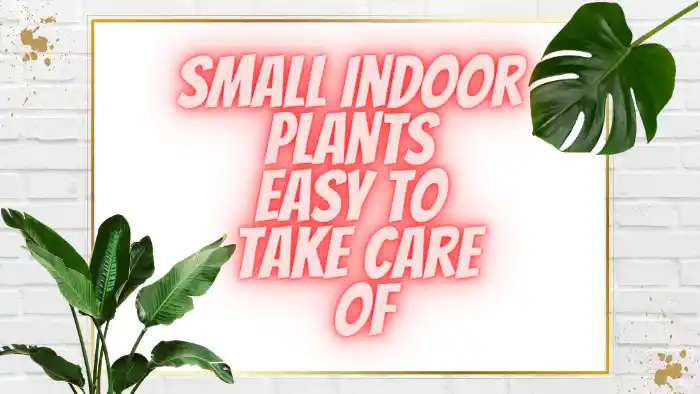Welcome to the vibrant world of indoor gardening in Colorado, where the unique climate demands resilient and adaptable plants.
In the high-altitude and often dry conditions of the Centennial State, selecting the right indoor plants is crucial for success.
Colorado’s diverse climate, with its cold winters and dry air, presents unique challenges for indoor plant enthusiasts. Selecting the right indoor plants that can thrive in Colorado’s conditions is essential for a successful indoor garden.
Understanding Colorado’s Climate
Colorado’s climate is known for its extreme temperatures and dry air. Winters can be bitterly cold, and summers can bring scorching heat.
Additionally, the high elevation can result in intense sunlight and lower humidity levels. These factors must be taken into account when selecting indoor plants that can flourish in this environment.
Factors to Consider for Indoor Plants
Before choosing indoor plants for your Colorado home, consider the following factors:
- Light: Determine the light conditions in your home.
- Watering: Understand the watering needs of the plants. Overwatering or underwatering can be detrimental to their health.
- Humidity: Colorado’s dry climate can lead to low indoor humidity. Look for plants that can tolerate such conditions.
- Temperature: Temperature fluctuations are common in Colorado. Select plants that can handle both warm summers and chilly winters.
Top Picks for Indoor Plants in Colorado

Snake Plant (Sansevieria trifasciata)
- Snake plants are hardy and can tolerate low light and infrequent watering.
- Their striking vertical leaves add a touch of elegance to any space.
- ZZ Plant (Zamioculcas zamiifolia)
- ZZ plants are low-maintenance and can thrive in both bright and low-light settings.
- Their glossy, dark green leaves bring a modern aesthetic to your home.
Spider Plant (Chlorophytum comosum)
Spider plants are excellent air purifiers and can adapt to various light conditions.
They produce “spiderettes,” which dangle down and create a visually appealing display.
Pothos (Epipremnum aureum)
Pothos are known for their trailing vines and heart-shaped leaves.
They’re highly adaptable and can thrive in a variety of lighting conditions.
Peace Lily (Spathiphyllum spp.)
Peace lilies are known for their elegant white blooms and air-purifying qualities.
Aloe Vera
Aloe vera’s soothing gel has various medicinal uses.
It requires bright sunlight and infrequent watering.
Burro’s Tail (Sedum morganianum)
It loves bright light and requires minimal watering.
Jade Plant (Crassula ovata)
Jade plants have fleshy leaves and a unique tree-like appearance.
They thrive in bright light and should be watered sparingly.
Boston Fern (Nephrolepis exaltata)
Boston ferns add a lush, feathery texture to your indoor space.
They enjoy high humidity and indirect light.
Swiss Cheese Plant (Monstera deliciosa)
Swiss cheese plants have iconic, holey leaves that bring a tropical vibe.
They do well in bright, indirect light and appreciate occasional misting.
Parlor Palm (Chamaedorea elegans)
Parlor palms are compact and ideal for smaller spaces.
They thrive in low to moderate light conditions.
Cast Iron Plant (Aspidistra elatior)
Cast iron plants are incredibly resilient and can tolerate neglect.
They prefer low light and infrequent watering.
Hoya (Hoya spp.)
Hoyas, also known as wax plants, feature waxy, star-shaped flowers.
They can tolerate varying light conditions and infrequent watering.
Bamboo Palm (Chamaedorea seifrizii)
Bamboo palms add a touch of the tropics with their elegant fronds.
They thrive in bright, indirect light and appreciate humidity.
Christmas Cactus (Schlumbergera spp.)
Christmas cacti bloom during the holiday season, adding festive color.
They require bright but indirect light and consistent moisture.
Best Houseplants for Colorado Winter
- Snake Plant (Sansevieria)
- ZZ Plant (Zamioculcas Zamiifolia)
- Peace Lily (Spathiphyllum)
Best Houseplants for Colorado Outdoor
- Lavender (Lavandula)
- Russian Sage (Perovskia atriplicifolia)
- Sedum (Stonecrop)
Best Houseplants for Colorado Denver
- Spider Plant (Chlorophytum comosum)
- Pothos (Epipremnum aureum)
- Aloe Vera
Best Houseplants for Colorado Springs
- Geraniums
- Yarrow (Achillea millefolium)
- Blue Fescue Grass (Festuca glauca)
Tips for Caring and Maintenance
- Watering: Allow the soil to dry out between watering sessions to prevent root rot.
- Lighting: Rotate your plants to ensure even growth, especially if they’re placed near windows.
- Humidity: Use humidity trays or room humidifiers to increase moisture levels.
- Fertilization: Feed your plants with a balanced liquid fertilizer during the growing season.
Decorating with Indoor Plants
Indoor plants not only improve air quality but also enhance the aesthetics of your home. Place them on windowsills, shelves, or hanging baskets to create visually pleasing displays.
Mix and match different plant varieties to add texture and color to your living space.
Conclusion
Incorporating indoor plants into your Colorado home is an excellent way to bring nature indoors and brighten up your living spaces.
By selecting the right plants that can withstand the unique climate conditions, you can create a lush and inviting environment that thrives year-round.
FAQs
Can I keep these plants outdoors during the summer?
While some of these plants can handle outdoor conditions during the warmer months, be cautious of sudden temperature shifts and ensure they receive appropriate light.
How often should I fertilize my indoor plants?
Fertilize your plants every 4–6 weeks during the growing season (spring and summer).
Can indoor plants survive in the dry climate of Colorado?
Yes, there are many indoor plants that can thrive in the dry climate of Colorado.
Do indoor plants require special care to adapt to the high altitude in Colorado?
Some indoor plants may require extra attention to adjust to the high altitude, but many varieties do well with regular care.
Are there indoor plants that can help improve air quality in Colorado homes?
Yes, certain indoor plants are known for their air-purifying properties and can help improve air quality indoors.
What are some low-maintenance indoor plants suitable for busy Coloradans?
There are several low-maintenance indoor plants that are perfect for busy individuals in Colorado, such as snake plants and pothos.
Do I need special lighting for my indoor plants in Colorado’s often sunny climate?
Depending on the location of your home and natural light exposure, you may need to supplement with artificial lighting for some indoor plants.
Can I grow herbs indoors in Colorado year-round?
Yes, many herbs can be successfully grown indoors in Colorado throughout the year with proper care and attention.
Are there any specific indoor plant pests I should watch out for in Colorado?
Common houseplant pests like spider mites and aphids can affect indoor plants in Colorado, so it’s important to monitor your plants regularly.
How do I choose the best indoor plant for my specific living space and lighting conditions in Colorado?
Consider factors such as available light, space constraints, and personal preference when selecting an indoor plant that will thrive in your home environment in Colorado.
What plants grow best in Colorado?
Plants that thrive in Colorado include native grasses, wildflowers, and drought-resistant species like succulents.
What does Colorado grow the most?
Colorado is known for growing crops such as corn, wheat, and various fruits, particularly in the Western Slope region.
What is the fastest growing plant in Colorado?
The fastest growing plant in Colorado is often considered to be the black-eyed Susan or certain varieties of horseradish.
Why is Colorado so rich?
Colorado’s wealth comes from its diverse economy, including technology, agriculture, and natural resources.
What makes Colorado so great?
Colorado’s appeal lies in its stunning landscapes, outdoor recreational opportunities, and vibrant cultural scene.
What creates growth in Colorado?
Growth is fostered by a combination of fertile soil, favorable climate conditions, and dedicated agricultural practices.
What fruit grows best in Colorado?
Fruits like peaches, cherries, and apples grow particularly well in Colorado’s climate.
What is the easiest flower to grow in Colorado?
Marigolds and sunflowers are among the easiest flowers to grow in Colorado.
What foods grow well in Colorado?
Root vegetables, leafy greens, and various herbs thrive in Colorado’s climate.
What is the #1 industry in Colorado?
The top industry in Colorado is technology, with significant contributions from tourism and agriculture.
What is Colorado’s main source of income?
Tourism and outdoor recreation are major sources of income for Colorado’s economy.
What food does Colorado grow?
Colorado produces a variety of foods including grains, fruits, vegetables, and livestock.
Can lemon trees grow in Colorado?
Lemon trees can be grown indoors or in greenhouses but struggle outdoors due to cold temperatures.
Which plants grow best in Colorado?
Native plants such as sagebrush, wildflowers, and evergreens are well-suited for Colorado’s environment.
Can roses survive in Colorado?
Yes, many rose varieties can thrive in Colorado with proper care and site selection.
What is the best tree to plant in Colorado?
The blue spruce is considered one of the best trees to plant due to its adaptability and beauty.
What is a popular tree in Colorado?
The aspen tree is a popular choice for its striking fall colors and ability to grow in various conditions.
What tree grows the fastest in Colorado?
The cottonwood tree is known for its rapid growth rate in Colorado’s climate.
What are the best trees to plant in Colorado?
Best trees include blue spruce, ponderosa pine, and maple for their resilience and beauty.
What tree represents Colorado?
The blue spruce is often seen as a symbol of Colorado.
What is the longest living tree in Colorado?
The bristlecone pine is known to be among the longest-living trees in Colorado.
What is the main tree in Colorado?
The ponderosa pine is one of the most common trees found across Colorado.
What is the most resilient tree in Colorado?
The bur oak is known for its resilience to drought and harsh weather conditions.
What color is Colorado known for?
Colorado is often associated with blue and gold, reflecting its state colors.
What is a symbol for Colorado?
The Rocky Mountain bighorn sheep serves as a state symbol for Colorado.
What part of Colorado has the most trees?
The mountainous regions, particularly around the Rockies, have the highest tree density.
What is the biggest tree in Colorado?
The largest tree in terms of volume is typically a giant sequoia found in cultivated settings.
When can I put my plants outside in Colorado?
Plants can usually be placed outside after the last frost date, typically around mid-May.
When to plant cucumber in Colorado?
Cucumbers should be planted outdoors after the last frost, generally late May to early June.
When to plant garlic in Colorado?
Garlic is best planted in the fall, about 4-6 weeks before the ground freezes.
When to plant flower seeds in Colorado?
Flower seeds can be sown outdoors after the last frost; late spring is typically ideal.
Is it hard to grow vegetables in Colorado?
Growing vegetables can be challenging due to altitude and temperature fluctuations but is manageable with proper techniques.
What plants can you start indoors in Colorado?
Plants such as tomatoes, peppers, and herbs are great for starting indoors before transplanting outside.
What vegetables grow in Colorado?
Vegetables like carrots, beets, lettuce, and peppers grow well in Colorado’s climate.
Why is Colorado the healthiest?
Colorado’s health rankings are often attributed to its active lifestyle options and access to outdoor activities.
What is Colorado’s state flower?
The columbine is recognized as Colorado’s state flower.
Can you grow vegetables year-round in Colorado?
With proper greenhouse management or indoor setups, it’s possible to grow some vegetables year-round.
How often should I water tomato plants in Colorado?
Tomato plants typically need watering once a week, or more often during hot spells.
How often do you water roses in Colorado?
Roses should be watered deeply once a week, adjusting for rainfall and temperature conditions.
Where is the best place to plant roses in Colorado?
Roses thrive best in sunny locations with well-drained soil.
Can hibiscus survive in Colorado?
Hardy hibiscus varieties can survive but may require winter protection in colder areas.
What is the most poisonous plant in Colorado?
Water hemlock is considered one of the most poisonous plants found in Colorado.
What is the native plant of Colorado?
The state flower, columbine, is among the native plants of Colorado.
What is the national tree of Colorado?
The blue spruce serves as the national tree of Colorado.
What flower is Colorado known for?
The columbine is widely recognized as a representative flower of Colorado.
What are the most common plants in Colorado?
Common plants include sagebrush, wildflowers, and various conifers like pine and spruce.
Can you grow monstera in Colorado?
Monstera can be grown indoors but struggles outdoors due to cold temperatures.
What food plants are native to Colorado?
Native food plants include chokecherry and serviceberry among others.
How many plants can you grow at home in Colorado?
Homeowners can legally grow up to 12 plants for personal use under state law.
Can you grow tropical plants in Colorado?
Tropical plants need indoor environments or greenhouses due to cold winters but can thrive during summer months outdoors.
How many plants are native to Colorado?
There are over 1,800 native plant species recorded in Colorado.
What is a Colorado plant?
A plant that naturally occurs and thrives within the state’s ecosystems is considered a Colorado plant.
What vegetation is native to Colorado?
Native vegetation includes grasslands, forests, and alpine flora adapted to high elevations.
Why is Colorado called Colorado?
The name “Colorado” comes from the Spanish word “colorado,” meaning “colored red,” referring to the red sandstone soil found in some areas.
What famous people are from Colorado?
Famous people from Colorado include John Elway, Tim Allen, and Linda Hamilton.
What food is only in Colorado?
Palisade peaches are famously unique to the region due to their specific growing conditions.
Is Colorado a good place to grow plants?
Yes, with proper knowledge of climate and soil conditions, it can be a great place to grow various plants.
How much does it cost to get a grow license in Colorado?
Costs vary based on license type; consult local regulations for specifics on fees.
Do carrots grow in Colorado?
Yes, carrots thrive well in cooler seasons and are commonly grown.
Can lemon trees grow in Colorado?
Lemon trees can be grown indoors or under protective conditions outdoors.
Can mango grow in Colorado?
Mango trees require warmer climates than what most of Colorado provides.
Can bananas grow in Colorado?
Banana trees may survive indoors but struggle outdoors due to cold.
What is a Colorado native called?
A native person from Colorado may be referred to as a Coloradan.
Where do most Indians live in Colorado?
Most Indigenous communities reside on reservations or urban areas across the state.
What trees change color in Colorado?
Aspen trees are known for their vibrant golden yellow leaves during fall.
Why is it called Golden Colorado?
The name reflects the area’s gold mining history during the 19th century.
What is the oldest tree in Colorado?
Bristlecone pines are among the oldest trees found throughout the state.
What trees grow best in Colorado?
Trees like ponderosa pine and blue spruce adapt well to local conditions.
When should I plant trees in Colorado?
Early spring or fall when temperatures are cooler are ideal times for planting.
Where in Colorado has the most trees?
Forested areas such as mountain ranges have the highest tree density.
Are there hardwood trees in Colorado?
Yes, hardwoods like oak and cottonwood can be found throughout the state.
Do maple trees grow in Colorado?
Certain maple varieties adapt well but require specific conditions.
Does mint grow in Colorado?
Yes, mint thrives well and grows vigorously throughout the state.
When to plant basil in Colorado?
Basil should be planted after last frost dates; late spring works best.
Does Colorado have a state tree?
Yes, the blue spruce is designated as the state tree of Colorado.
Will apples grow in Colorado?
Many apple varieties can successfully grow across different regions of the state.
Can mango trees grow in Colorado?
Mangoes require warmer climates; they generally do not thrive outdoors here.
Can limes grow in Colorado?
Lime trees need warmer conditions; they are typically grown indoors or sheltered.
Does watermelon grow in Colorado?
Watermelon can be grown successfully during summer months with proper care.
Does lemon grass grow in Colorado?
Lemongrass grows well indoors but may not survive outdoor winters.
How much does it cost to plant a tree in Colorado?
Costs vary based on species and size but generally range from $20-$200.
How many plants can you legally have in Colorado?
State law allows residents to cultivate up to 12 personal-use plants.
What are the white trees in Colorado called?
White barked aspens are commonly referred to as “white trees” due to their distinctive appearance.
Do trees grow in Colorado?
Yes, trees flourish across diverse habitats throughout the state.
What makes Colorado unique?
Colorado’s unique geography includes mountains, deserts, and diverse ecosystems that support various wildlife and plant life.
I am a Horticulture graduate and passionate gardener with expertise in identifying, growing, and caring for plants, trees, and seeds. With a focus on sustainable practices, they aim to promote environmental awareness and appreciation for the natural world.








